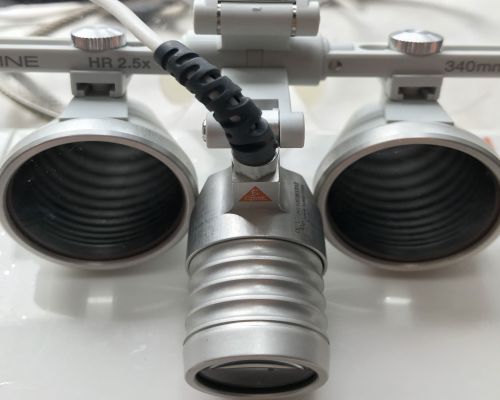The procedure is usually done under General anaesthesia, though local anaesthesia is preferred in certain patient groups. It is a daycase procedure, ie one does not need to stay overnight in the hospital, though typically a patient would spend a whole day in the hospital. The operation itself takes about 1 hour to do. The operation can be done via an external approach, where a skin incision is made on the sidewall of the nose and the lacrimal sac is then connected to the nasal cavity after removing some bone from the nasal side wall. I tend to put in a silicone tube to maintain the patency of the new opening for 6 weeks, after which I remove the tubes in the clinic. At the end of the surgery you will have glue applied to the skin and a pressure dressing. The dressing can be removed at home the next day and the glue will fall off in 3-7 days. You do not need to have any sutures removed. Post operatively I prescribe an eye drop to be inserted into the operated eye 4 times a day for 2 weeks, a combination of an antibiotic and steroid. I will then see you in 6 weeks for removal of the tubes.

Once you are home, you should take it easy for a week while you recover from the anaesthetic. Your eye and surrounding tissue is likely to be quiet bruised.
Do not blow your nose for a week following the operation and avoid hot drinks for 48 hours as these can encourage bleeding. Refrain from lifting heavy weights or strenuous activity and do not swim until the stents are removed.
The aim of the operation is to make a new drainage passage for the tears and hence reduce or stop watering from the eye.
The risks associated with this operation are rare.
Firstly bleeding, especially in the first 3-4 days postoperatively as the nasal mucosa is very vascular and blood clots that may have stopped the bleeding can fall off leading to a nasal bleed. Sometimes the operation site can get infected due to the nasal bacteria and this can also cause bleeding.
If you experience bleeding that is constant, lasts more than 20 minutes and does not stop with cold compresses, then you need to head to your nearest A&E or ENT minor assessment unit for your nose to be pressure packed to stem the bleeding.
The second complication is scaring, the skin does not leave a significant scar in pale skinned patients, but in pigmented skin there is a greater risk of the scar being visible. Webbing of the skin in the inner corner of the eye is a rare complication. Other problems that can occur are cheese wiring of the punctum due to the silicone stent or corneal abrasions secondary to the stent rubbing the eye.
Extremely rare, but more serious complications documented in the literature are a CSF leak, severe bleeding needing rehospitalisation and blood transfusion or damage to the eye.
An Endo-DCR is a procedure where the opening of the sac into the nose is done from within the nose using an endoscope.
It’s natural to feel anxious when it comes to treatment and surgical procedures especially in relation to your eyes. I encourage you to ask questions about your condition, so I can help you to be better informed of your condition, the treatment options available and allay any fears that you may have. During the consultation I will explain the procedures to you and help you to make positive choices, and remember there is always the option of doing nothing, so you have nothing to worry about.


